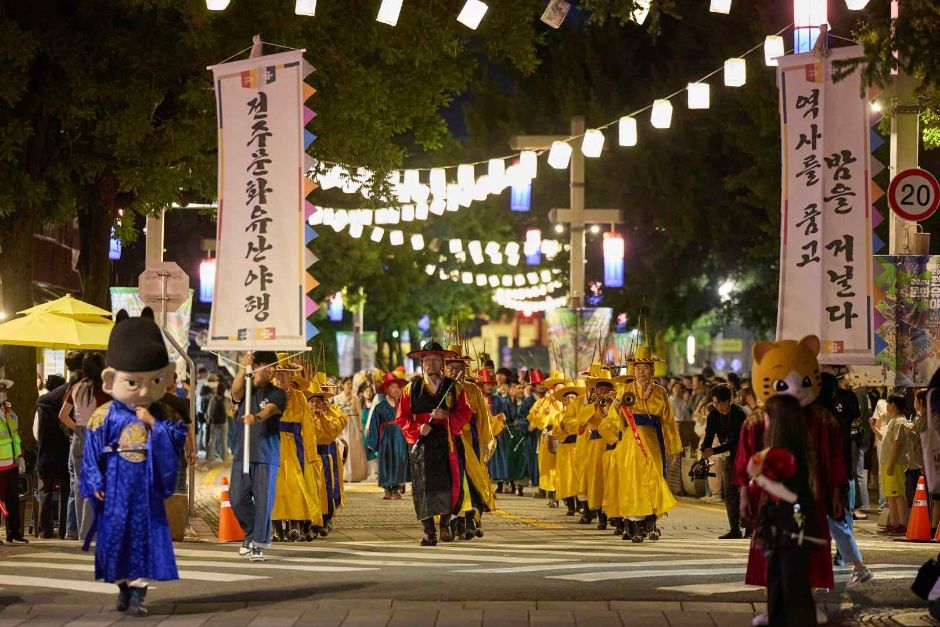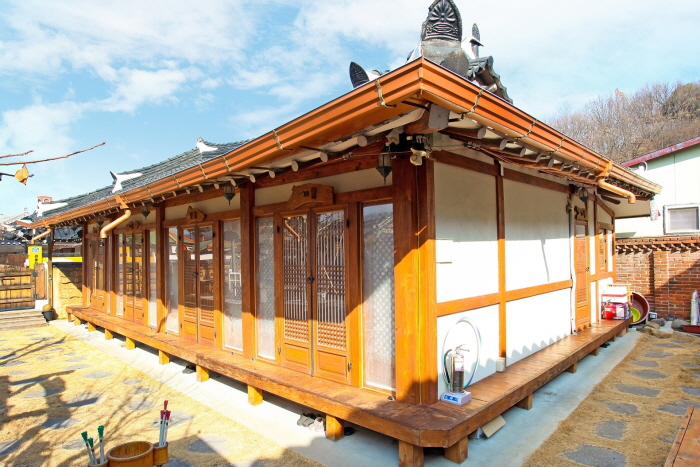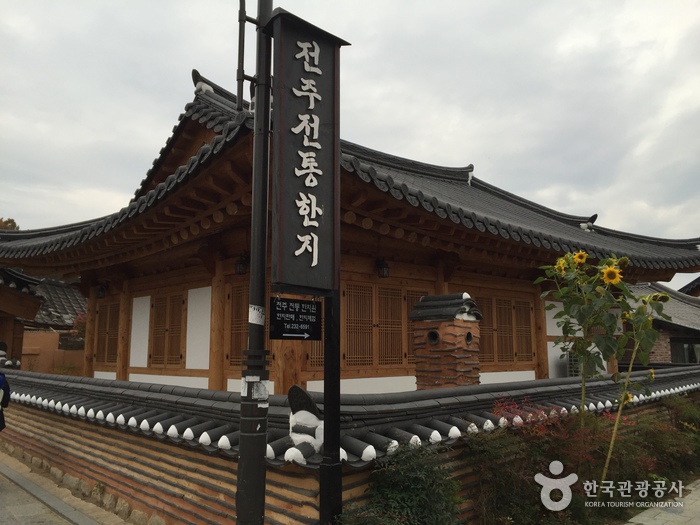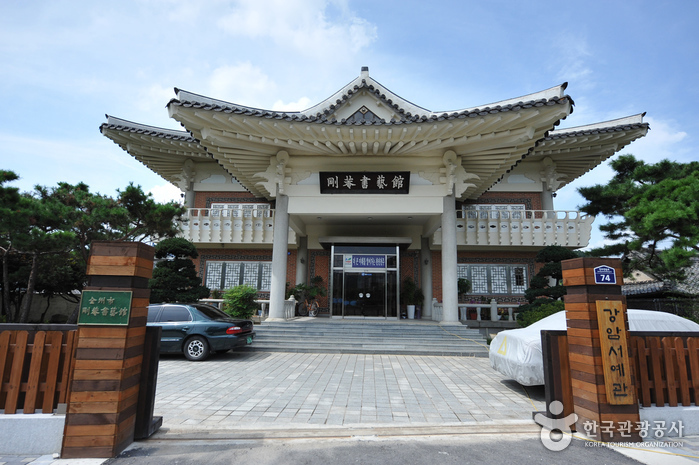Omokdae e Imokdae (오목대와 이목대)
212.4M 2024-04-07
Girin-daero 55, Wansan-gu, Jeonju-si, Jeonbuk-do.
Omokdae está situado en la cima de una colina y se trata de uno de los lugares donde Yi Seong-gye (quien se convirtiera más tarde en el rey Taejo, el primero de la dinastía Joseon) hizo una parada para celebrar su victoria de camino a casa tras la guerra contra los invasores japoneses, al final de la era Goryeo. Enfrente de Omokdae está Imokdae, situado cerca de los pies del monte Seungamsan, donde se encuentra Chimyeongjasan, un monumento católico. En este lugar, Mokjo (antepasado del rey Taejo) solía jugar con sus amigos a representar guerras de niño, una acción muy simple que aparecería después en 'Yongbieocheonga', una balada del siglo XV que narra los logros culturales de la nación.
Paseo Nocturno de Patrimonios Nacionales en Jeonju (전주국가유산야행)
218.4M 2025-05-08
Taejo-ro 44, Wansan-gu, Jeonju-si, Jeonbuk-do.
063-232-9937
Este tour se dedica a la preservación y puesta en valor del patrimonio cultural coreano. Jeonju es una ciudad que alberga gran cantidad de sitios que son patrimonio histórico de la época de Joseon. Durante las noches que dura el tour, los visitantes pueden experimentar y conocer de cerca la historia de Corea y apreciar su legado ancestral.
Siwon (시원)
222.5M 2025-06-18
45-41, Omokdae-gil, Wansan-gu, Jeonju-si, Jeonbuk-do
Siwon is a timber and clay-built hanok stay, part of Jeonju Hanok Village in Jeonbuk-do. It has four guestrooms, all but one with a small attic - so guests can have fun climbing up and down the ladder! The rooms have all been insulated and draft-proofed to keep visitors warm and comfortable. In the yard is a small garden and swing, and guests can play traditional games such as Tuho and Jegichagi - or even take part in a carpentry workshop. Must-see sites such as Gyeonggijeon, Jeondong Cathedral, Omokdae, and Nambu Market can all be reached on foot.
GaEunChae2 [Korea Quality] / 가은채2 [한국관광 품질인증]
226.3M 2024-04-07
100-20, Hanji-gil, Wansan-gu, Jeonju-si, Jeonbuk-do
+82-10-6335-5267
Gaeunchae 2 is the sister accommodations of Gaeunchae and is located behind the Jeonju Korean Traditional Wine Museum. Completed in 2011, the traditional Hanok has soil walls and soil Ondol floors finished with traditional Hanji wallpaper and Hanji floor paper for greater traditional beauty. The exposed rafter and gray wall design make for the unique interior atmosphere of Hanok. Sculptures such as stone lantern and stone tiger in the garden, old rectangular stone, and terrace stone in the yard make the Hanok even more elegant. The small floor in the room just in front of the door is a versatile space where one can put luggage or sit and have a chat.
Being situated close to the busy Taejoro in Jeonju Hanok Village, Gaeunchae 2 offers easy access to major tourist sites of the village including Jeondong Catholic Cathedral, Gyeonggijeon, Imokdae, etc. which are within walking distance. Guests can have a food trip as well as visit great restaurants and cafes clustered nearby.
Hanokhyeyum[Korea Quality] / 한옥혜윰[한국관광 품질인증/Korea Quality]
238.2M 2024-04-07
42-5, Hyanggyo-gil, Wansan-gu, Jeonju-si, Jeonbuk-do
+82-10-5512-1226
Located in Jeonju Hanok Village, Hanok Hyeyum offers a traditional “hanok” (traditional Korean house) experience to its guests. The Korean term “hyeyum” means “thought,” and the hostel’s name pertains to the owners’ wishes of providing new feelings and thoughts to visitors. Its design faithfully brings the feel of the grain on the timber, which was possible with the participation of Daemokjang and Somokjang artisans specializing in hanok construction. The hanging sign at the entrance is carved by a Mokjogakjang, an artisan carpenter and holder of Intangible Cultural Property, and the same spirit of dedication and passion can be found throughout the building. There are six rooms in total, all Korean-style with exposed rafters, handwritten calligraphy, dainty furniture, and masterful teacups. Guests can also find a surprise welcome package of face mask packs. All rooms have modern and sleek bathrooms, while some rooms come with small attic spaces. Hanok Hyeyum also offers pickup services to solo female travelers from the Jeonju Bus Terminal or Jeonju Station, and a complimentary breakfast with a seasonal menu, including items like rice cakes, egg, sweet potato, fruits, and coffee.
Hanok Garden in Jeonju/ 전주한옥마당
259.9M 2025-03-05
80-13, Jeonjucheondong-ro, Wansan-gu, Jeonju-si, Jeonbuk-do
+82-10-9494-4579
Jeonju Hanok Madang is located in the Jeonju Hanok Village. Jeonjucheon Stream and Namcheongyo Bridge are only one block away, whereas Gangam Calligraphy Museum, Jeonjuhyangyo Confucian School, Jeonju Hanbyuk Culture Center, Nambu Market, and Markbu Market Youth Mall are nearby. Major attractions of the Jeonju Hanok Village such as Gyeonggijeon, Jeondong Catholic Cathdral, and Omokdae are also within walking distance.
The main building and servants’ quarters of Jeonju Hanok Madang were built in 1941. It was renovated to retain the original shape of the traditional hanok, yet cozy and comfortable enough for modern people to use. Porches are attached to every room while Faith Room and Hope Room have additional inner floors attached to it. Inside the rooms are rafters, beams, wooden pillars walled with Hanji wallpapers, and ribs of lattice doors. There is a clean bathroom in each room.
The yard is the place the owner couple cherishes the most. Guests can enjoy the yard in any room just by opening the door. It is a combination of jar stands, a small pine tree, and small potted plants. Different flowers bloom from spring through autumn. It is such a pleasure to sit on the porch and appreciate the scene. In autumn, the persimmon tree bears fruits and dried persimmons hang from the eaves.
Centro Tradicional del Hanji en Jeonju (전주전통한지원)
262.9M 2024-04-07
Hanji-gil 100-10, Wansan-gu, Jeonju-si, Jeonbuk-do
Jeonju ha sido el mayor productor de papel tradicional hanji durante más de cien años. Aún mantiene esta orgullosa tradición y el Centro Tradicional del Hanji pretende preservar las técnicas tradicionales de fabricación de papel y ser el centro de la industria del hanji. Más del 80 por ciento del papel producido en el centro es exportado a Japón, y el resto se usa en Corea. El centro produce, expone y vende hanji para caligrafía, pinturas orientales y otros elementos artesanales.
Museo de Caligrafía Gangam (강암서예관)
267.1M 2024-04-07
Jeonjucheondong-ro 74, Wansan-gu, Jeonju-si, Jeonbuk-do.
Jeonju es considerada como una de las ciudades de la cultura y el arte de Corea, pero si desea sentir su ambiente artístico más de cerca y profundamente, visite el museo de caligrafía Gangam, situado en los alrededores de la Aldea Tradicional. El museo fue inaugurado en el año 1995 y es visitado por una gran cantidad de personas que aman el arte. En sus cercanías se encuentran varios lugares turísticos, considerados como valiosos patrimonios del país, la puerta Pungnammun, el santuario Gyeonggijeon, y hacia el este, la Escuela Confuciana Jeonju Hyanggyo, junto con el monte Omokdae, etc.
Este museo fue fundado en conmemoración y homenaje al gran maestro Song Seong-yong, cuyo seudónimo era “Gangam”, quien fue un famoso calígrafo nacido en esta región. Siendo el único museo exclusivo de la caligrafía en el país, expone un total de 1.162 piezas artísticas de las siguientes figuras claves del ramo: Chusa Kim Jeong-hui, funcionario público y calígrafo de Joseon, Lee Sam-man (seudónimo Changam), Kim Hong-do (seudónimo Danwon), Jeong Yak-yong (seudónimo Dasan), famoso filósofo religioso de Joseon, etc.
Por otro lado, a 200 m de distancia de este museo se inauguró la Sala Conmemorativa de la Revolución Donghak, por lo tanto, también podrá aprovechar la ocasión para conocer la historia de esta revuelta campesina.
Ilrakdang sarangchae [Korea Quality] / 일락당사랑채 [한국관광 품질인증]
279.2M 2024-04-07
15, Choemyeonghui-gil, Wansan-gu, Jeonju-si, Jeonbuk-do
+82-10-3084-6679
A must visit place for tourists in Jeonju, Ilrakdang Sarangchae is located in the middle of the traditional Korean house village of Jeonju. The very first of three enjoyments for noble man, as indicated by Menicus, the existence of parents and brothers with no troubles is what the place is named after. Standing in the garden, you can easily see the stone walls of Gyeonggijeon and also you are within the range of walking distance to Jeondong catholic church, Omokdae, Southern market, Jeonju Hyanggyo, and the wall painting village of Jaman.
The rooms are called, Haengbokchae, Sarangbang, Mitum band, Monday, Tuesday, Wednesday, Thursday, Friday, Saturday, Sunday and so on. Haengbok room 1/2, a living room with furnace, a big sized attic above the living room are shared together, which makes it most suitable for big families or a small group of tourists. The Monday/Tuesday/Friday/Saturday/Sunday rooms all have a small, cozy attic and in every guest room’s wall, column and doors are mainly made of woods which makes them feel very warm. On every morning, in the shared kitchen, simple breakfasts mainly consisting of toasts, jams, coffee and juice are served. All guests are provided with discounts on Korean costume rental(30%), motor bikes(30%) and waengi bean sprout soup with rice (1000KRW). Besides, there are various services such as introduction to tasty restaurants in partnerships with traditional Korean house villages, as well as discounts, and try out of Korean rice cake making experiences and so on.
Santuario Gyeonggijeon (경기전)
281.7M 2024-04-06
Taejo-44, Wansan-gu, Jeonju-si, Jeonbuk-do.
El Santuario Gyeonggijeon fue fundado en 1410 y es donde se guarda el retrato del rey Lee Taejo, el fundador de la dinastía de Joseon, dibujado en Jeonju, Gyeongju y Pyongyang. La estructura fue parcialmente destruida durante la Guerra de Imjin de 1592 a 1598. La estructura actual fue reconstruida en 1614.






![Ilrakdang sarangchae [Korea Quality] / 일락당사랑채 [한국관광 품질인증]](http://tong.visitkorea.or.kr/cms/resource/57/2596657_image2_1.jpg)
 Español
Español
 한국어
한국어 English
English 日本語
日本語 中文(简体)
中文(简体) Deutsch
Deutsch Français
Français Русский
Русский